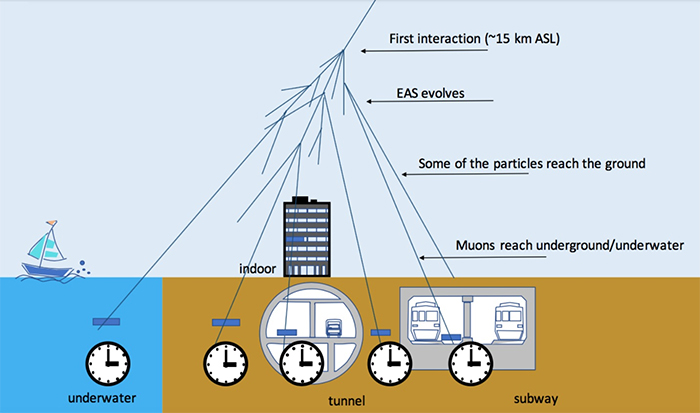
This Cosmic Timekeeping Method Proposes to Synchronize All Clocks on Earth
MIKE MCRAE 14 MAY 2022Modern technology pulses with a heartbeat measured in microseconds. From global positioning systems to communications networks, it's vital every component falls into near-perfect synch.
Based on standards determined by a specialized task group, signals sent through optic fiber or down from an orbiting satellite tend to ensure time-sensitive technology matches moments down to the nanosecond.
Yet this isn't always going to be the case. Reliant on fallible electronics, separated by vast distances, hidden beneath waves and stone, it's easy for vital pieces of a network to lose the beat.
According to University of Tokyo geophysicist Hiroyuki Tanaka, it might be high time we looked elsewhere for a more reliable, more accessible timekeeper. Like to the sky, and above.
"It's relatively easy to keep time accurately these days. For example, atomic clocks have been doing this for decades now," says Tanaka.
"However, these are large and expensive devices that are very easy to disrupt. This is one reason I have been working on an improved way to keep time."
Called cosmic time synchronization (CTS), Tanaka proposes we use the subatomic fireworks that shower down from collisions between high energy cosmic rays and our atmosphere.
Those collisions generate a variety of particles, one of which is the heavyweight cousin of the electron – the muon.
These beefy bits of matter shoot towards the planet's surface at close to the speed of light, respecting little in its path. Hold out your hand and you can expect a muon to punch through your palm once a second.
Even the rock beneath your feet struggles to block its path, a feature that makes them perfect for shining a light on the insides of dense structures like the Great Pyramid of Giza.
Crucially, every shower of muons rains down in a slightly unique fashion, providing a signature explosion that can be detected independently by sensors spread across several square kilometers.
By sharing details of each event and working backward, a network can use a series of cosmic muon fireworks to synchronize their watches with split-second precision.
 (Hiroyuki K. M. Tanaka)
(Hiroyuki K. M. Tanaka)
"The principle is robust, and the technology, detectors, and timing electronics already exist. So we could implement this idea relatively quickly," said Tanaka.
It's easy to imagine a web of muon-catchers on the ocean floor or scattered in remote regions, conscientiously synchronized to align observations that could help pinpoint earthquakes or warn against tsunamis.
According to Tanaka, the technology could also have an added advantage of serving as the basis for a new kind of global positioning system by mapping muons back to their source.
Whether such technology could augment current methods, serve as an alternative in select situations, or replace it altogether, is yet to be seen.
"Thomas Edison lit up Manhattan starting with a single light bulb," says Tanaka.
"Perhaps we should take that approach, starting with a city block, then a district, and eventually we'll synchronize the whole of Tokyo and beyond."
This research was published in Scientific Reports.


comment 0 Comments
more_vert